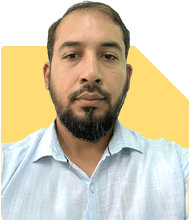Can a B.Tech in ECE Pursue Research in Mathematics?
Aasif Ahmed Khan | Answer |Ask -Follow
Tech Career Expert - Answered on Jul 26, 2024
Aasif is passionate about guiding students and aspiring engineers as they aim to choose the right educational paths, including courses and colleges.
He holds a bachelor's degree in mechanical engineering from the Indore Institute of Science & Technology in Indore and is currently pursuing a master's degree in thermal and fluid engineering at the Indian Institute of Technology, Mumbai.... more

Can I go in research in Maths after Btech in ECE?
1. Bridge Courses: Can take additional courses in mathematics to build a strong foundation. Topics like linear algebra, calculus, and discrete mathematics are essential.
2. Master’s Degree in Mathematics: After completing her B.Tech in ECE, you can pursue a master’s degree (M.Sc. or M.Math) in mathematics. This will provide a deeper understanding of mathematical concepts.
3. Research Interests: Identify specific interests within mathematics. Whether it’s pure mathematics (like algebra, number theory, or geometry) or applied mathematics (such as mathematical modeling or optimization), having a clear focus guide you in the research path.
4. Doctoral Studies (Ph.D.): To engage in serious mathematical research, you should consider pursuing a Ph.D. in mathematics. This involves original research, publishing papers, and contributing to the field.
5. Collaboration: Connect with professors, researchers, and mathematicians. Attend seminars, workshops, and conferences to network and learn about ongoing research.
6. Self-Study: Read mathematical literature, solve problems, and explore advanced topics independently.
You may like to see similar questions and answers below
Nayagam P P |10859 Answers |Ask -Follow
Career Counsellor - Answered on Aug 02, 2024
Nayagam P P |10859 Answers |Ask -Follow
Career Counsellor - Answered on May 23, 2025
Dr Dipankar Dutta |1841 Answers |Ask -Follow
Tech Careers and Skill Development Expert - Answered on Nov 18, 2025
Ramalingam Kalirajan |10908 Answers |Ask -Follow
Mutual Funds, Financial Planning Expert - Answered on Dec 20, 2025
Ramalingam Kalirajan |10908 Answers |Ask -Follow
Mutual Funds, Financial Planning Expert - Answered on Dec 20, 2025
Naveenn Kummar |237 Answers |Ask -Follow
Financial Planner, MF, Insurance Expert - Answered on Dec 20, 2025
Ramalingam Kalirajan |10908 Answers |Ask -Follow
Mutual Funds, Financial Planning Expert - Answered on Dec 19, 2025
Nayagam P P |10859 Answers |Ask -Follow
Career Counsellor - Answered on Dec 19, 2025
Ramalingam Kalirajan |10908 Answers |Ask -Follow
Mutual Funds, Financial Planning Expert - Answered on Dec 19, 2025
Ramalingam Kalirajan |10908 Answers |Ask -Follow
Mutual Funds, Financial Planning Expert - Answered on Dec 19, 2025
Ramalingam Kalirajan |10908 Answers |Ask -Follow
Mutual Funds, Financial Planning Expert - Answered on Dec 19, 2025
Radheshyam Zanwar |6751 Answers |Ask -Follow
MHT-CET, IIT-JEE, NEET-UG Expert - Answered on Dec 19, 2025
Radheshyam Zanwar |6751 Answers |Ask -Follow
MHT-CET, IIT-JEE, NEET-UG Expert - Answered on Dec 19, 2025
























